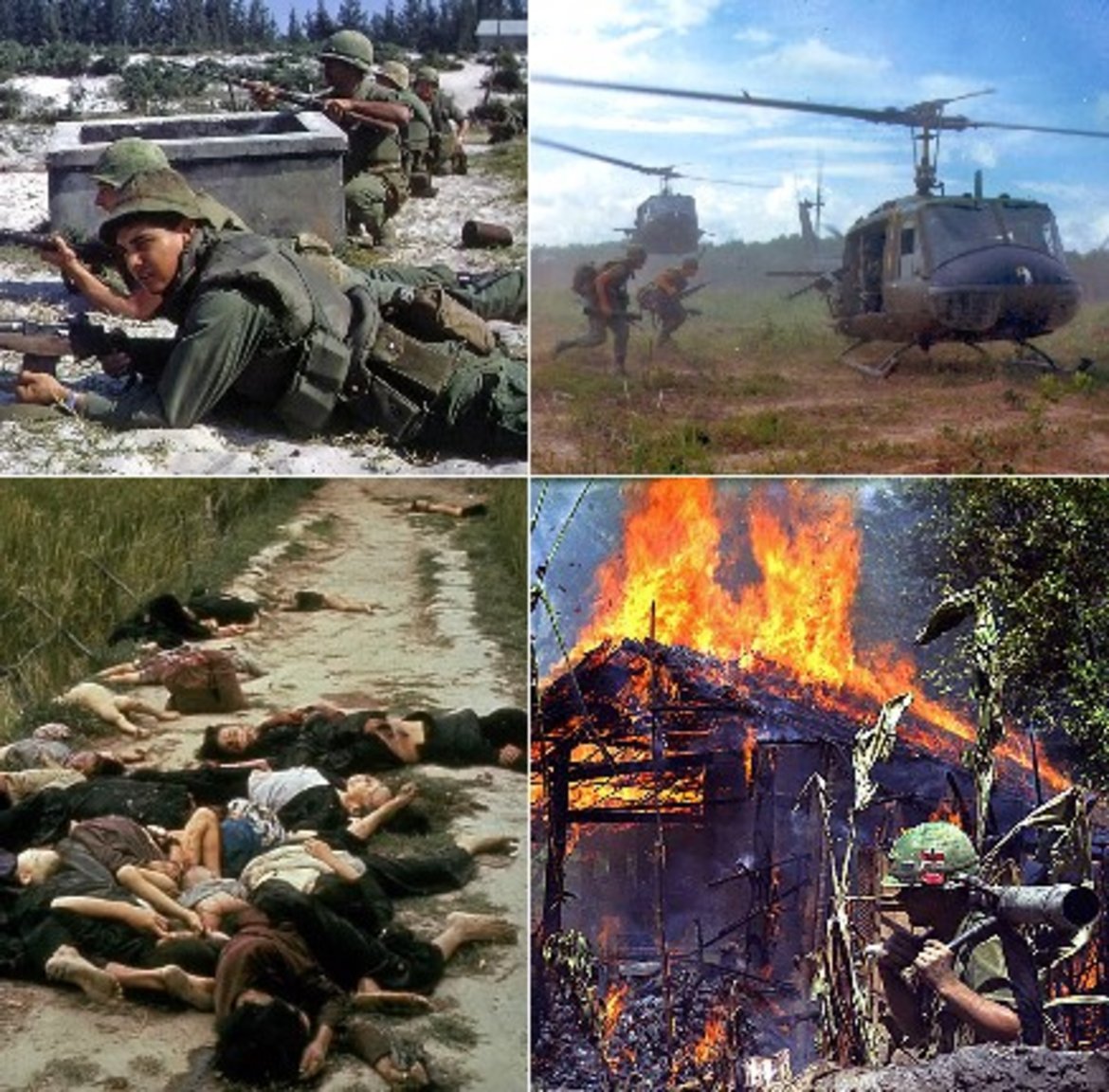
In August, 1964, President Johnson reported to the nation that American ships had been attacked by North Vietnam gunboats in the Gulf of Tonkin, in international waters. It became the aim of the Johnson administration to prevent a communist takeover in Southeast Asia. If one nation falls to communism, the next nation will fall, and the next, etc. Johnson also believed in containment and the domino theory. Following the Eisenhower and Kennedy administrations, President Lyndon B. The United States also was pledged by treaty (SEATO) to aid the member nations in southeast Asia, if they were attacked by a foreign (communist) power. The Eisenhower administration provided South Vietnam with money and advisors to help stop the threat of a North Vietnamese takeover. Ho Chi Minh was a communist and during the Cold War of the 1950s and 60s, the aim of the US government was containment of communist power and not to let it spread. The government of South Vietnam requested military advisors from the United States to help train the South Vietnamese army. Diem refused to go along with the planned elections in 1956 to unite the nation, because he knew he would lose, so the Vietminh members in the south created the Viet Cong and the war between north and south for control of the country began. The people of the south chose Ngo Dinh Diem as their ruler and Ho continued to rule the north. In 1954, the Vietminh defeated the French at the Battle of Dien Bien Phu, and the nation was temporarily divided into two sections, north and south. On December 19, 1946, Vietminh forces attacked the French in Hanoi and the Indochina War-also known as the Vietminh War-began. When the Allies defeated Japan in WWII, the British and Chinese accepted the surrender of the Japanese in Vietnam and the French re-entered the area and took over control again. In 1945, he proclaimed the Democratic Republic of Vietnam. It was during this period, that Ho Chi Minh, a Vietnamese Communist, returned to Vietnam from China and headed a Revolutionary League to regain independence for Vietnam. In 1940-41, the Japanese advanced into and took control of Northern and Southern French Indo-China, as France had been defeated by Germany at that time.

In 1861, the French seized control of Saigon and the rest of the south by 1867.

In 1427, the Chinese were driven out and another Vietnam nation was established.

In 1407, the Chinese regained control of the area. The Chinese had control over the area known as Vietnam, but in 939, they left and an independent Vietnam was created. Here is a brief outline of the events (wars) leading up to the United States fighting in Vietnam.


 0 kommentar(er)
0 kommentar(er)
